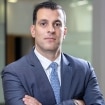Smarter, stronger, faster: The new normal in IT
August 25, 2017
In today’s interconnected world, technology touches everything and is disrupting how business gets done. PwC’s Digital IQ survey found that champions of digital technologies are twice as likely to achieve rapid revenue and profit growth when compared to companies that are slower to adopt. Moreover, it is top of mind for business leaders – 86% of CEO’s feel that it is crucial to incorporate digital technologies into their businesses.
To be successful in this new environment, IT organizations must aspire to be smarter, stronger, and faster than they are today, enabled by changes across three dimensions: organization and talent; business and customer; and process and technology.
The way in which these elements come together – mutually reinforcing and driven by the strategy and core capabilities – is what makes the difference for the enterprise. In addition to adopting to these changes, the IT organization is required to be increasingly efficient in its role of running and sustaining the business, creating investment capacity for growth and transformation. This duality of focus, both on navigating a rapidly changing digital landscape and driving sustainable operations - can be strengthened by this new IT operating model.
Smarter: Technology-driven competititive advantage through process and talent
The role of IT is changing from a passive provider of technology to an internal insurgent, challenging the status quo and leading the digital transformation proactively across the enterprise. In a recent study we found 70% of CEOs are investing in IT to drive down cost, and they increasingly view technological innovation as a way to capture efficiency and create competitive advantage.
While there are certainly shifts in the CIO’s duties, our experience shows that a strategic and empowered CIO can be a difference maker in a technology-enabled organization. The role of the CIO is to leverage technology to solve the most complex business problems, in turn decreasing operating expenses, increasing revenue, or improving market positioning. Moreover, over the next three years, CIOs will increasingly be expected to champion internal innovation efforts.
That said, the availability of XaaS makes it easy for the business to build their own solutions, increasing business-embedded IT and creating an interesting dynamic between the CIO and business leaders. In the financial services industry for example, there is an increasing trend to create technology-focused capability pods within the business, with central IT becoming increasingly focused on keeping operations running smoothly.
These changes are widening the talent gap and are creating an imperative for IT organizations to become adept at building the right talent. Narrowly specialized expertise is no longer the expectation; rather, the imperative is to find people who understand both business and technology, who have the flexibility and agility to operate across multiple modes, with skills and competencies that are often hard to find.
Faster: Modern processes and technology driving speed, agility and flexibility
Improved speed to market is an imperative for most businesses, and IT holds the keys to unlock more nimble delivery and faster time to value. 34% of IT and business leaders see inflexible or slow processes as the top barrier to successfully executing a digital strategy. With the introduction of small automation via programmable robots, organizations are able to realize up to 3x human productivity in routine processes, improving speed and agility in the back-office and accelerating speed to market.
Further, with agile development models – whether through scrum or more extreme programming, IT organizations can deliver products to the business more quickly, allowing for more iterative review cycles and more real-time feedback. Improving these processes has measurable upside. At one client, introducing more extreme programming models allowed IT to deliver a new web application in 5 days – 200% faster and 60% less costly than originally estimated.
This speed is required in an environment where business customers demand for IT to be always on, and always on-demand. Organizations that view technology as a competitive lever must embrace the transformation imperative to continue improving their capabilities, leveraging digital to enhance the customer experience and optimize business operations.
Stronger: A more capable IT organization that enables the business
Leveraging next generation architectures – such as Cloud, XaaS – allows for more nimble platforms that are more powerful, easier to enhance, and cheaper to maintain. Yet adopting these new technologies and transforming legacy architectures represent a major challenge and require a shift in the IT operating model. Further, most organizations are not able to run in a completely Zero-Infrastructure model or with only agile delivery methods, thus requiring a multi-modal operating model that balances agility with stability and responsiveness with reliability.
As a result of these new technologies and process changes – or perhaps to allow for the investment required to build them – IT is expected to find ways to become more efficient and bring down the unit cost over time. This requires IT to become more efficient in its core functionality – for example optimizing service management or executing security and compliance. It also requires IT organizations to rethink automation – smaller and able to deliver savings more quickly – while strengthening the core foundation.
A stronger IT function is also close to the customer, using advanced customer data and analytics to glean unprecedented customer insights. In this model, the IT function has two clients: the internal business customer and, increasingly, the external customer or end user. This approach calls for an increased investment in data, analytics, and UI/UX design experience, for a simplified and customer-friendly IT landscape.
Closing
The IT operating model is changing – organizations can choose to evolve or transform, but sitting still is not an option. To meet future demands and enable the dynamic businesses of the 21st century, the IT operating model must adapt and become stronger, faster and smarter.
Contact us






